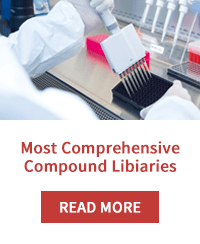

Neuropilin is a type I transmembrane protein and the molecular mass is 120 kDa. Two homologs, Neuropilin-1 and Neuropilin-2, are identified. The primary structure of Neuropilin-1 and Neuropilin-2 is well conserved and is divided into four domains, CUB (a1/a2) domain, FV/FVIII (b1/b2) domain, MAM (c) domain, and (d) domain that contains a transmembrane and a short cytoplasmic region. Neuropilin-1 (NRP1) acts as a receptor for two different extracellular ligands, class 3 semaphorins, and specific isoforms of vascular endothelial growth factor. The functions of NRP1 and NRP2 have been extensively studied in neurons where they act in axon guidance and in endothelial cells where they promote angiogenesis and cell migration. Neuropilin-1 is likely to mediate contacts between the dendritic cells and the T lymphocytes via homotypic interactions and is essential for the initiation of the primary immune response. NRP1 is a co-receptor for VEGF receptor-2 (VEGFR2) that enhances the binding of VEGF165 to VEGFR2 and VEGF165-mediated chemotaxis. NRP1 expression is regulated in EC by tumor necrosis factor-alpha, the transcription factors dHAND and Ets-1, and vascular injury. NRP1 upregulation is positively correlated with the progression of various tumors. Overexpression of NRPI in rat tumor cells results in enlarged tumors and substantially enhanced tumor angiogenesis. On the other hand, soluble NRP1 (sNRP1) is an antagonist of tumor angiogenesis.

| Pack Size | Availability | Price/USD | Quantity |
|---|---|---|---|
| 50 μg | 5 days | $ 600.00 | |
| 1 mg | 5 days | $ 4,560.00 |
| Description | Neuropilin is a type I transmembrane protein and the molecular mass is 120 kDa. Two homologs, Neuropilin-1 and Neuropilin-2, are identified. The primary structure of Neuropilin-1 and Neuropilin-2 is well conserved and is divided into four domains, CUB (a1/a2) domain, FV/FVIII (b1/b2) domain, MAM (c) domain, and (d) domain that contains a transmembrane and a short cytoplasmic region. Neuropilin-1 (NRP1) acts as a receptor for two different extracellular ligands, class 3 semaphorins, and specific isoforms of vascular endothelial growth factor. The functions of NRP1 and NRP2 have been extensively studied in neurons where they act in axon guidance and in endothelial cells where they promote angiogenesis and cell migration. Neuropilin-1 is likely to mediate contacts between the dendritic cells and the T lymphocytes via homotypic interactions and is essential for the initiation of the primary immune response. NRP1 is a co-receptor for VEGF receptor-2 (VEGFR2) that enhances the binding of VEGF165 to VEGFR2 and VEGF165-mediated chemotaxis. NRP1 expression is regulated in EC by tumor necrosis factor-alpha, the transcription factors dHAND and Ets-1, and vascular injury. NRP1 upregulation is positively correlated with the progression of various tumors. Overexpression of NRPI in rat tumor cells results in enlarged tumors and substantially enhanced tumor angiogenesis. On the other hand, soluble NRP1 (sNRP1) is an antagonist of tumor angiogenesis. |
| Species | Human |
| Expression System | HEK293 |
| Tag | His |
| Accession Number | NP_001019799.2 |
| Synonyms | BDCA4, NRP, neuropilin 1, Neuropilin-1, VEGF165R, CD304, NP1 |
| Construction | A DNA sequence encoding the human NRP1 (NP_001019799.2) (Met1-Lys644) was expressed with a polyhistidine tag at the C-terminus. |
| Protein Purity | > 95 % as determined by SDS-PAGE. |
| Molecular Weight | 71.33 kDa (predicted) |
| Endotoxin | < 1.0 EU per μg protein as determined by the LAL method. |
| Formulation | Lyophilized from sterile PBS, pH 7.4. Please contact us for any concerns or special requirements. Normally 5 % - 8 % trehalose, mannitol and 0. 01% Tween 80 are added as protectants before lyophilization. Please refer to the specific buffer information in the hard copy of CoA. |
| Reconstitution | A hardcopy of datasheet with reconstitution instructions is sent along with the products. Please refer to it for detailed information. |
| Stability & Storage |
Samples are stable for up to twelve months from date of receipt at -20℃ to -80℃. Store it under sterile conditions at -20℃ to -80℃. It is recommended that the protein be aliquoted for optimal storage. Avoid repeated freeze-thaw cycles. |
| Shipping |
In general, recombinant proteins are provided as lyophilized powder which are shipped at ambient temperature.Bulk packages of recombinant proteins are provided as frozen liquid. They are shipped out with blue ice unless customers require otherwise. |
| Research Background | Neuropilin is a type I transmembrane protein and the molecular mass is 120 kDa. Two homologs, Neuropilin-1 and Neuropilin-2, are identified. The primary structure of Neuropilin-1 and Neuropilin-2 is well conserved and is divided into four domains, CUB (a1/a2) domain, FV/FVIII (b1/b2) domain, MAM (c) domain, and (d) domain that contains a transmembrane and a short cytoplasmic region. Neuropilin-1 (NRP1) acts as a receptor for two different extracellular ligands, class 3 semaphorins, and specific isoforms of vascular endothelial growth factor. The functions of NRP1 and NRP2 have been extensively studied in neurons where they act in axon guidance and in endothelial cells where they promote angiogenesis and cell migration. Neuropilin-1 is likely to mediate contacts between the dendritic cells and the T lymphocytes via homotypic interactions and is essential for the initiation of the primary immune response. NRP1 is a co-receptor for VEGF receptor-2 (VEGFR2) that enhances the binding of VEGF165 to VEGFR2 and VEGF165-mediated chemotaxis. NRP1 expression is regulated in EC by tumor necrosis factor-alpha, the transcription factors dHAND and Ets-1, and vascular injury. NRP1 upregulation is positively correlated with the progression of various tumors. Overexpression of NRPI in rat tumor cells results in enlarged tumors and substantially enhanced tumor angiogenesis. On the other hand, soluble NRP1 (sNRP1) is an antagonist of tumor angiogenesis. |
bottom
Please read the User Guide of Recombinant Proteins for more specific information.
Neuropilin-1 Protein, Human, Recombinant (His) NP-1 BDCA-4 BDCA4 NRP neuropilin 1 CD-304 CD 304 NP 1 BDCA 4 Neuropilin-1 VEGF165R CD304 NP1 recombinant recombinant-proteins proteins protein
